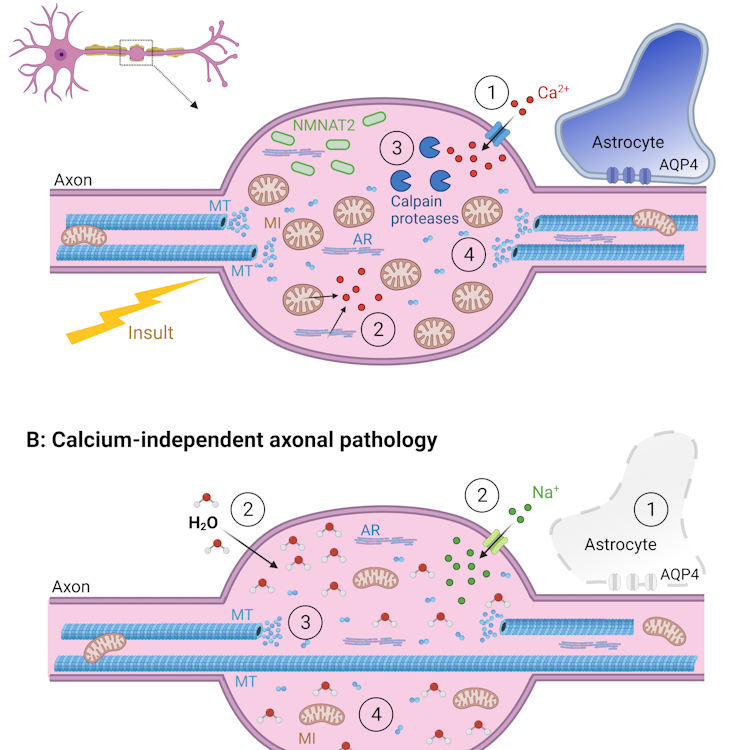
Axon degeneration: new actor in an old play
After an insult of white matter tracts, e.g. in the spinal cord or optic nerve, axons react in general by the activation of a tightly regulated self-destruction program. This so-called axon degeneration cascade can be triggered by various causes, including injury, toxins, and genetic defects, and is a shared pathway in many different neurological diseases (Coleman and Hoke, 2020). Axonal degeneration is thought to be responsible for disease progression and accumulation of disability across many neurological conditions. The hallmark of early axonal injury is the appearance of local spheroid formations along the axon, often referred to as a “pearl-on-string” pattern or axonal beading or swelling. Although this striking shape change has been observed after various types of injury, such as mechanical, chemical, or inflammatory stimuli, we know little about its exact mechanism and its immediate impact on axonal functionality. In this perspective, we would like to contrast the classical calcium-dependent form of axonal degeneration with a recently described form of a calcium-independent mechanism underlying axonal beading.
Download
herwerth-2023.pdf



